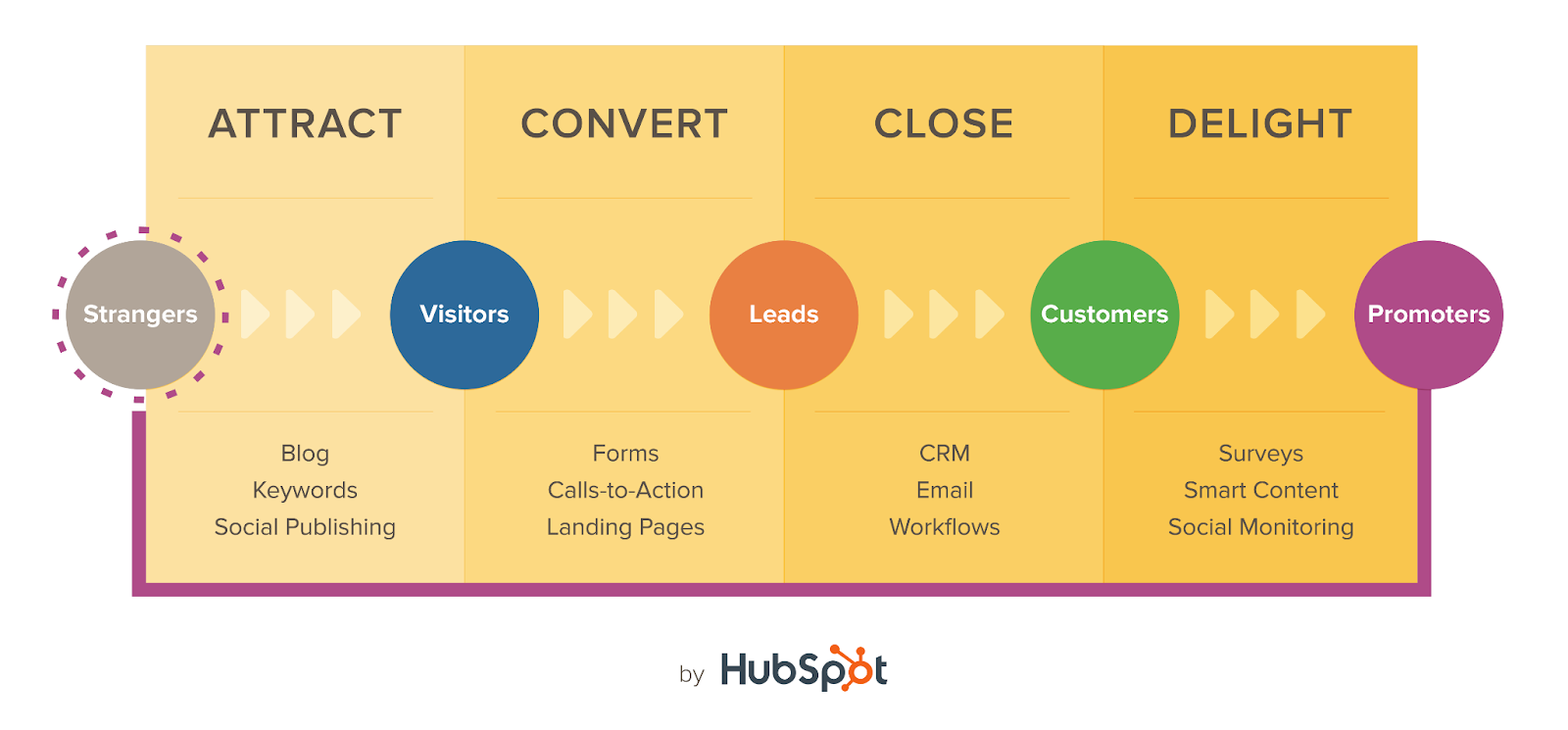This blog post goes into detail about the important differences between branding and marketing strategies and shows how each plays a part in the success of a business. A company's brand is its long-term identity and set of values. It creates a unique persona that connects with its audience. It focuses on things like voice, values, promise, brand identity, and consistency. Marketing strategy, on the other hand, uses tactics and channels to reach specific goals in the short term by measuring progress. The blog uses Nike's successful branding and marketing strategies to show how a strong brand identity can work with smart marketing strategies to get results. In short, the blog stresses how branding and marketing work together to build business growth, brand recognition, and customer loyalty.
In the ever-evolving landscape of business and marketing, the concepts of branding and marketing strategy stand as pillars of success. Did you know that 77% of B2B marketers say that branding is critical to growth, while a staggering 89% of customers stay loyal to brands that share their values? These statistics underscore the profound impact of branding on customer relationships and market competitiveness. In this blog, let’s delve into the essence of branding in marketing and draw a clear comparison between Brand and Marketing strategies. We'll explore the fundamental principles of each, dissect their unique objectives, and uncover how they collaborate to propel businesses to success. Let’s get started.
Table of Contents |

What is Branding in Marketing?
If you've ever wondered, "What exactly is branding in marketing?" Well, it's not just a fancy logo, a set of colors, or a catchy slogan. While these are crucial supporting elements, branding is the art of crafting a unique and memorable identity for your business. It is about creating a persona for your company, a personality that resonates with your audience.
A well-defined brand tells the world who you are, what you stand for, and what customers can expect when they interact with your business.
Successful Branding Strategy

To craft a successful branding strategy, consider the following brand management strategies:
Brand Identity
Logo: Your logo is the most recognizable visual element of your brand. It serves as the face of your business. A well-designed logo should be simple, memorable, and representative of your brand's personality and values. Think about the iconic "Apple" logo or the golden arches of McDonald's. These logos instantly evoke their respective brands.
Color Palette: The colors you choose are crucial in shaping your brand's identity. Different colors evoke different emotions and perceptions. For instance, red often symbolizes energy and excitement (think Coca-Cola), while green can signify health and eco-friendliness (as seen with Whole Foods). Consistency in the use of these colors is key to reinforcing your brand's identity.
Typography: The fonts and typography used in your branding materials, including your logo and marketing collateral, play a significant role in conveying your brand's personality. Fonts can be bold and modern, classic and elegant, or creative and playful. Your choice should align with your brand's character and values.
Visual Elements: Beyond logos and color, consider other visual elements, such as images, graphics, and icons, that consistently appear in your branding materials. These elements contribute to the overall visual identity of your brand and should be aligned with your brand's values and message.
Brand Voice
Your brand's voice is the personality that comes through in your written and spoken communication. It defines the style and tone of your messaging. Whether your brand's voice is friendly, professional, innovative, or any other style, the key is to maintain consistency in your communication. Consistency builds trust and helps your audience connect with your brand on a personal level.
Brand Values
Your brand's values are the fundamental principles that your business upholds. These values guide your decisions and actions, and they should resonate with your target audience. Consider values like integrity, sustainability, innovation, or customer-centricity. Your brand's values should be reflected in everything your brand does, from the products or services it offers to the way it conducts business and interacts with customers.
Brand Promise
Your brand promise is the commitment you make to your customers. It sets the expectation and reflects the experience your customers can anticipate when interacting with your brand. It's the foundation of trust and reliability. For example, FedEx promises to "deliver peace of mind," which means they are committed to providing reliable and on-time delivery services. Your brand promise should be a consistent theme throughout all customer touchpoints, from advertising to customer support.
What is a Marketing Strategy?
A marketing strategy is a roadmap that outlines how you'll achieve your business objectives. It's a comprehensive plan that includes the tactics, channels, and messaging you'll use to reach your target audience and promote your brand.
A well-crafted marketing strategy aligns with your brand's identity and leverages its strengths to achieve measurable results.
Read Also: How SEO Impacts Your Business: Unveiling the Power of Online Visibility
Successful Brand Marketing Strategy

To develop an effective brand marketing strategy, focus on:
Target Audience
Buyer Personas: To define your ideal customers, create detailed buyer personas. These are fictional representations of your typical customers, including demographic information, pain points, preferences, and behaviors. Understanding your audience at this level of granularity allows you to tailor your marketing efforts precisely to their needs and preferences.
Market Research: Conduct thorough market research to understand the needs and challenges of your target audience. What problems are they trying to solve, and what solutions are they seeking? This research forms the foundation for crafting a message that resonates with their pain points and aspirations.
Segmentation: Your target audience may consist of different segments with varying needs. Segment your audience based on factors such as demographics, psychographics, and behaviors. Tailor your messaging and marketing channels to each segment to maximize your reach and relevance.
Positioning
Competitive Analysis: Assess your competitors to understand their strengths and weaknesses. Determine how your brand compares to competitors in the minds of your audience. Identify what makes your brand stand out. This process helps you identify your unique value proposition and key differentiators.
Brand Differentiation: Once you've identified what sets your brand apart, craft a compelling positioning statement that clearly communicates your brand's unique value. This statement should be concise and memorable, serving as the foundation for your brand's messaging.
Consistency: Maintain consistent positioning across all your marketing materials and touchpoints. This reinforces your brand's image and ensures that your audience perceives your brand the way you intend.
Channels and Tactics
Multi-Channel Approach: In today's digital age, a multi-channel approach is often essential. Identify the methods and platforms that resonate most with your target audience. This may include social media, content marketing, email marketing, SEO, pay-per-click advertising, and more.
Content Strategy: Develop a content strategy that aligns with your brand and target audience. Content marketing, in particular, is a powerful tactic. Create high-quality, valuable content that educates, entertains, or solves problems for your audience. Ensure that your content reflects your brand's identity and values.
Testing and Optimization: Continuously assess the performance of your marketing channels and tactics. Use data and analytics to make informed decisions about where to allocate your resources and refine your approach.
Messaging

Brand Voice: As mentioned earlier, your brand voice is the consistent tone and style in which you communicate. Ensure that your messaging aligns with your brand's personality and values. If your brand is friendly and approachable, your messaging should reflect that.
Value Proposition: Your messaging should clearly convey the value your brand offers to your audience. What problems do you solve? What benefits do you provide? Your messaging should resonate with the specific pain points and desires of your target audience.
Storytelling: Storytelling is a powerful way to convey your brand's values and connect with your audience on a deeper level. Craft narratives that illustrate your brand's journey, mission, or customer success stories.
A successful brand marketing strategy is not static; it's dynamic and adaptive. It involves staying attuned to the evolving needs and preferences of your audience, as well as adjusting your tactics and messaging to remain relevant. So. regularly seek feedback from your customers and monitor the competitive landscape to ensure that your brand continues to stand out and meet the needs of your target audience effectively.
Brand Strategy vs Marketing Strategy
Now that we have a clear understanding of both branding and marketing strategy, let's explore how they relate and differ.
|
|
|
|
|
|
|
|
|
|
|
|
|
|
|
|
|
|
|
|
|
|
|
|
|
|
|
|
Focus
Long-term identity and values: Branding is all about defining your brand's identity, values, and personality for the long term. It's not just about promoting products or services; it's about creating a brand that people recognize and trust. This focus on identity and values is a foundational element of branding.
Short-term goals and results: Marketing strategy, on the other hand, emphasizes achieving specific short-term goals, such as increasing sales, driving website traffic, or boosting conversions. It's about tactical plans and immediate results that support the overall business objectives.
Objective
Build and maintain brand recognition: The primary objective of branding is to create and maintain brand recognition. It's about building a strong and enduring brand identity that people remember and associate with certain values and experiences.
Achieve specific business goals: Marketing strategy's objective is to achieve measurable results that align with specific business goals. These goals can include increasing revenue, expanding market reach, or launching a new product successfully.
Timeline
Ongoing and enduring : Branding is a continuous and enduring process. It involves creating a brand identity that remains consistent over time, reinforcing the values and personality that your brand stands for.
Short-term, immediate: Marketing strategies often have shorter timelines, focusing on immediate actions and tactics to drive results within specific timeframes. Marketing campaigns may change and adapt more frequently.
Components
Brand identity, values, and messaging: Branding involves defining and maintaining key components like brand identity, core values, and the messaging that conveys these values to your audience. It's about establishing a brand's character and voice.
Tactical plans, channels, tactics: Marketing strategy encompasses the tactical plans and channels used to reach and engage your target audience. It includes specific marketing tactics such as advertising, social media campaigns, email marketing, and more.
Consistency
Long-term consistency: Consistency is a vital aspect of branding. Maintaining a consistent brand identity and message over the long term helps create a strong, recognizable brand that builds trust and recognition.
Short-term needs (mostly): Marketing strategy may adapt to address short-term goals, seasonal trends, or changes in the market. While some elements may change, it's important to maintain a degree of consistency in brand messaging and visual elements to avoid confusing your audience.
End Goal
Create lasting brand connection: The ultimate goal of branding is to create a deep and lasting connection with your audience. It aims to build a loyal customer base that identifies with your brand's values, making it a part of their lifestyle and choices.
Drive measurable results: Marketing strategy aims to drive specific, measurable results in the short term. These results contribute to your brand's overall success but are more immediate in nature and often tied to business objectives.
Branding and Marketing Strategy of Nike

Successful Branding Strategy
Slogan: Nike's famous "Just Do It" slogan is a cornerstone of its brand identity. It encourages individuals to push their limits, take action, and pursue their goals, aligning with the brand's core message of empowerment and motivation.
Athletic Excellence: Nike positions itself as a brand synonymous with athletic excellence. It associates its products with top athletes, teams, and sporting events, emphasizing a commitment to quality and performance.
Brand Values: Nike is associated with values like determination, inspiration, and innovation. Their branding campaigns often tell stories of athletes overcoming challenges, reinforcing the brand's mission of helping people reach their full potential.
Successful Marketing Strategy
Endorsement and Sponsorship: Nike's marketing strategy heavily relies on endorsements and sponsorships of high-profile athletes and sports teams. By showcasing these athletes' achievements and stories, Nike reinforces its commitment to athletic excellence and inspires its audience.
Emotion-Driven Advertising: Nike's marketing campaigns often focus on emotional storytelling. For example, their "Dream Crazy" campaign featuring Colin Kaepernick tackled social and cultural issues, garnering attention and sparking conversations. It aligned with their brand values of determination and empowerment.
Inclusivity and Diversity: Nike has successfully embraced inclusivity and diversity in its marketing. Their "You Can't Stop Us" campaign emphasized unity in sports and celebrated athletes from diverse backgrounds, reinforcing the brand's commitment to equality.
Innovative Product Promotion: Nike often leverages technology and innovation in its marketing. For instance, the launch of the Nike Training Club app provides personalized training plans, reinforcing the brand's commitment to helping individuals achieve their fitness goals.
Nike's successful branding and marketing strategies work in tandem to create a strong brand identity that is associated with athletic excellence, inspiration, and innovation. Their marketing campaigns effectively communicate these values through emotional storytelling and endorsements, inspiring and connecting with a broad audience of athletes and enthusiasts. This harmonious combination has made Nike a global leader in athletic apparel and footwear.
Conclusion
In conclusion, it is essential for businesses to recognize that the distinction between branding and marketing strategy should not be viewed as a choice between one or the other. But rather as a symbiotic relationship crucial for establishing a robust market presence. Branding, with its emphasis on creating a distinct and memorable identity, seamlessly intertwines with marketing strategy, which encompasses a comprehensive plan to promote and sell products or services. These two elements are not mutually exclusive; instead, they are integral components that harmoniously complement each other, working in tandem to contribute to a company's overall success.
At DO Communication, we recognize the significance of a well-crafted branding and marketing strategy. Our experienced team is dedicated to elevating your brand presence and optimizing your marketing efforts for maximum impact. Ready to enhance your business? Explore our comprehensive marketing services and discover how we can tailor strategies to meet your unique needs. Elevate your brand with DO Communication today.
Frequently Asked Questions
Q1. What is the difference between branding strategy and marketing strategy?
The primary difference between branding strategy and marketing strategy lies in their focus and timeline. A branding strategy centers on building a strong, enduring brand identity, values, and personality, aiming for long-term recognition and trust. In contrast, a marketing strategy is geared toward short-term tactics and channels, like advertising and social media, to achieve specific, measurable results, such as increasing sales or website traffic. While both are essential components of business success, branding focuses on creating a brand's identity, while marketing strategy is about promoting it.
Q2. Is a brand strategy a marketing strategy?
No, a brand strategy is not a marketing strategy. While both are essential components of a business's success, they serve distinct purposes. A brand strategy focuses on defining the brand's identity and values, while a marketing strategy outlines how to achieve specific marketing goals and objectives.
Q3. What is marketing vs branding example?
A good example of marketing vs branding is seen in the soft drink industry. Coca-Cola's branding strategy centers on creating a timeless and globally recognized brand identity associated with joy and togetherness. On the other hand, their marketing strategy may involve running a limited-time summer campaign on social media to boost sales during the season. The branding strategy builds the long-term perception, while the marketing strategy aims for short-term results.
Q4. What is the difference between a market strategy and a marketing strategy?
A market strategy is a broader concept that encompasses a company's overall approach to a specific market or industry. It includes market research, entry methods, positioning, and customer segmentation. A marketing strategy, however, focuses on specific tactics and channels used to promote products or services to target customers within that market. While a market strategy is about defining your approach to a market, a marketing strategy is about how you'll reach and engage customers within that market.
Q5. What is an example of brand marketing?
An example of brand marketing strategy is Nike's "Just Do It" campaign. Nike has built a strong brand identity that stands for inspiration, determination, and empowerment. The "Just Do It" campaign reinforces this brand identity and encourages consumers to associate those values with the Nike brand. This type of brand marketing aims to connect with the audience on a deeper, emotional level and strengthen the brand's identity.


